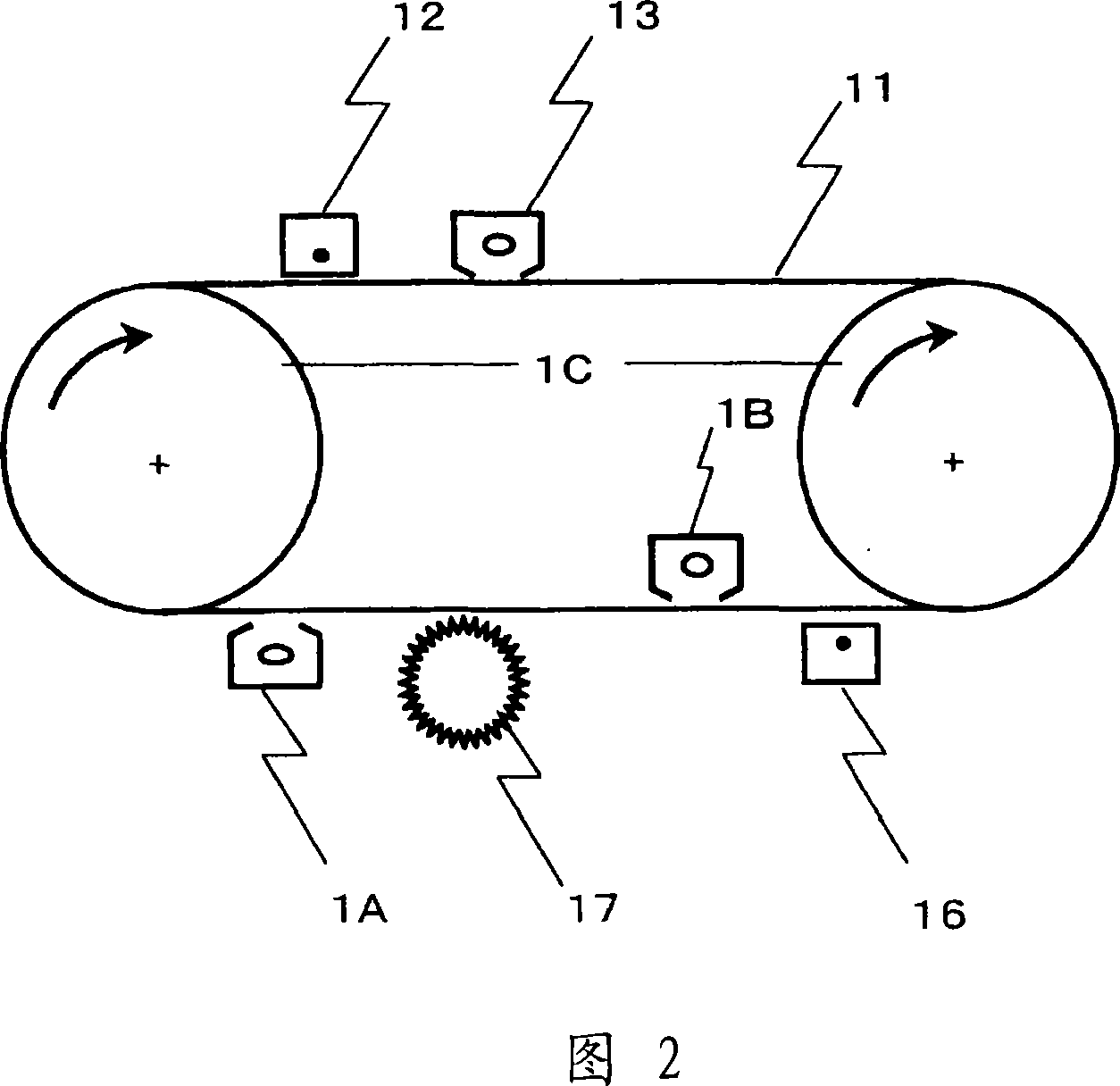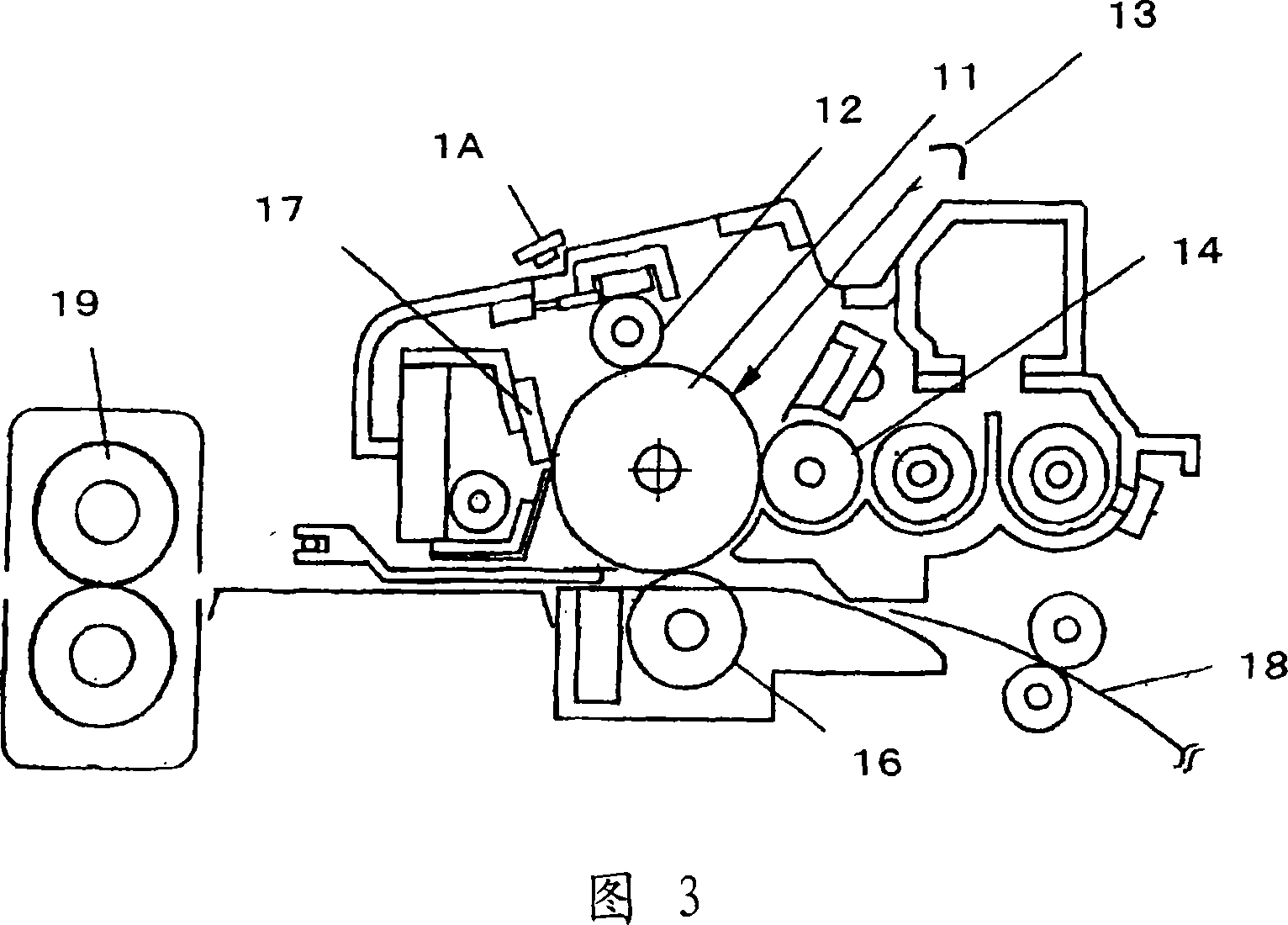Electrophotographic photoconductor, image forming apparatus, and process cartridge
An electrophotography and photoreceptor technology, which is applied to the electrical recording process using the charge pattern, the equipment and optics of the electrical recording process using the charge pattern, and can solve the problem of low charging stability of the single-layer photoreceptor, residual potential difference, and inability Eliminates problems such as potential differences, suppresses deterioration of photoreceptor characteristics or generation of afterimages, stabilizes characteristics such as chargeability, and has excellent charge transport functions
- Summary
- Abstract
- Description
- Claims
- Application Information
AI Technical Summary
Problems solved by technology
Method used
Image
Examples
Embodiment 1
[0227] Metal-free phthalocyanine was dispersed under the following composition and conditions to prepare a pigment dispersion.
[0228] Metal Free Phthalocyanine Pigments
[0229] (Manufactured by Dainippon Inki Industry Co., Ltd.: Fastogen Blue8120B): 3 servings
[0230] Cyclohexanone 97 parts
[0231] These were put into a glass pot with a diameter of 9 cm, and dispersed with PSZ balls with a diameter of 0.5 mm at a rotation speed of 100 rpm for 5 hours to prepare a pigment dispersion liquid.
[0232] A coating liquid for a photosensitive layer having the composition described below was prepared using the pigment dispersion liquid.
[0233] Pigment dispersion: 60 parts
[0234] The electron transport material of compound 1-1 listed: 25 parts
[0235] The hole-transporting material of the enumerated compound 2-1: 25 parts
[0236] Z-type polycarbonate resin (manufactured by Teijin Chemicals: Panlite TS-2050): 50 parts
[0237] Silicone oil (manufactured by Shin-Etsu Che...
Embodiment 2
[0241] A photoreceptor (as photoreceptor 2 ).
[0242] (Titanyl phthalocyanine used in Example 2)
[0243] A pigment was produced based on JP-A-2001-19871. That is, 29.2 g of 1,3-diiminoisoindoline and 200 ml of sulfolane were mixed, and 20.4 g of tetrabutoxytitanium was added dropwise under a nitrogen stream. After the dropwise addition, the temperature was slowly raised to 180° C., the reaction temperature was kept between 170° C. and 180° C., and the reaction was carried out with stirring for 5 hours. After the reaction, cool naturally, then filter the precipitate, wash with chloroform until the powder turns blue, then wash several times with methanol, then wash several times with hot water at 80°C, and then dry to obtain crude titanyl phthalocyanine. Thick titanyl phthalocyanine is dissolved in the vitriol oil of 20 times of amount, then is added dropwise to the ice water of 100 times of amount while stirring, the crystallization that separates out is filtered, then rep...
Embodiment 3~15
[0255] Photoreceptors (photoreceptors 3 to 15) were produced in the same manner as in Example 2 except that the electron transport material and hole transport material used in Example 2 were changed to those shown in Table 3.
PUM
 Login to View More
Login to View More Abstract
Description
Claims
Application Information
 Login to View More
Login to View More - R&D
- Intellectual Property
- Life Sciences
- Materials
- Tech Scout
- Unparalleled Data Quality
- Higher Quality Content
- 60% Fewer Hallucinations
Browse by: Latest US Patents, China's latest patents, Technical Efficacy Thesaurus, Application Domain, Technology Topic, Popular Technical Reports.
© 2025 PatSnap. All rights reserved.Legal|Privacy policy|Modern Slavery Act Transparency Statement|Sitemap|About US| Contact US: help@patsnap.com



